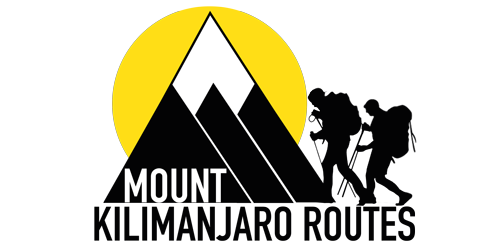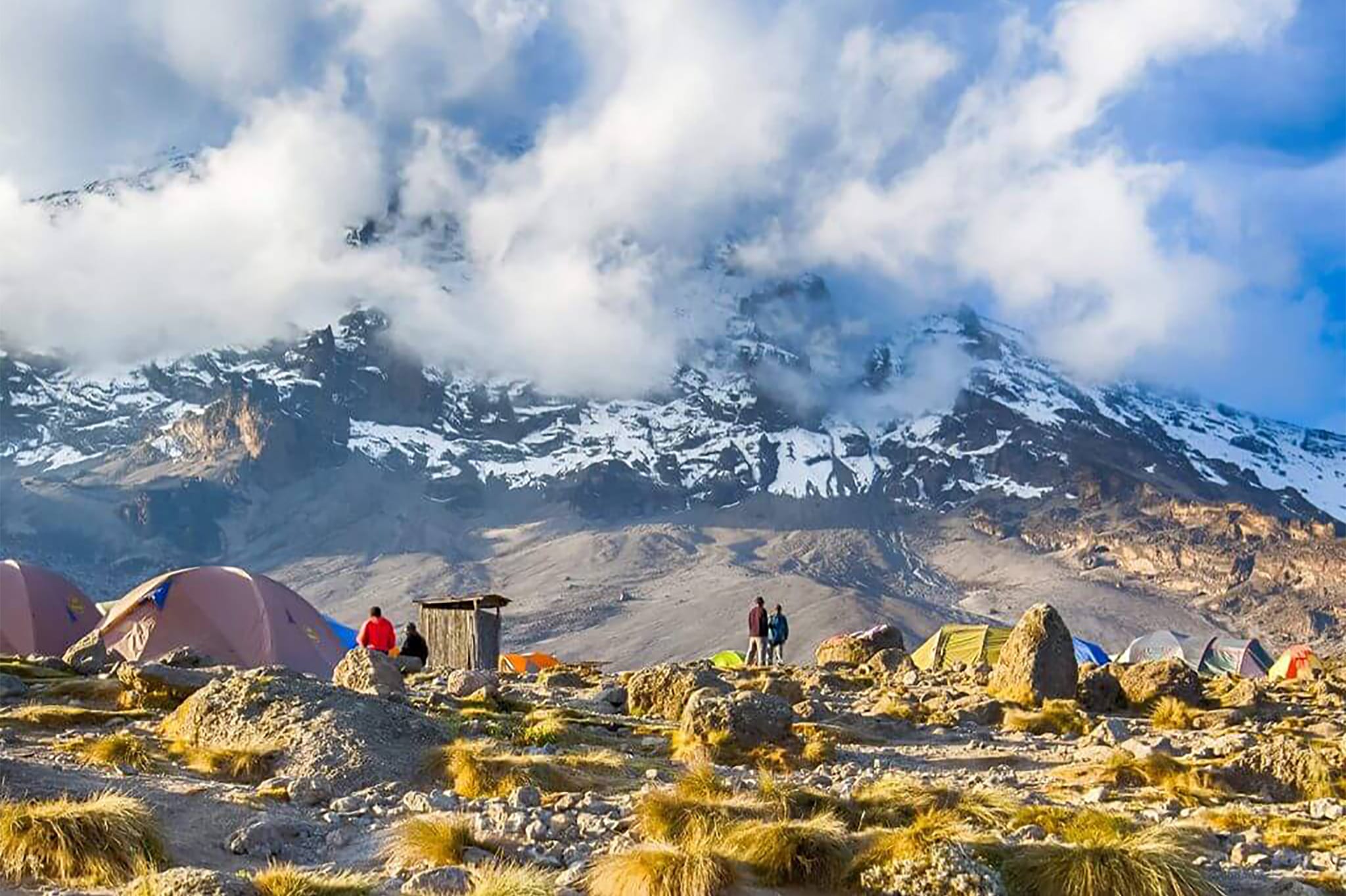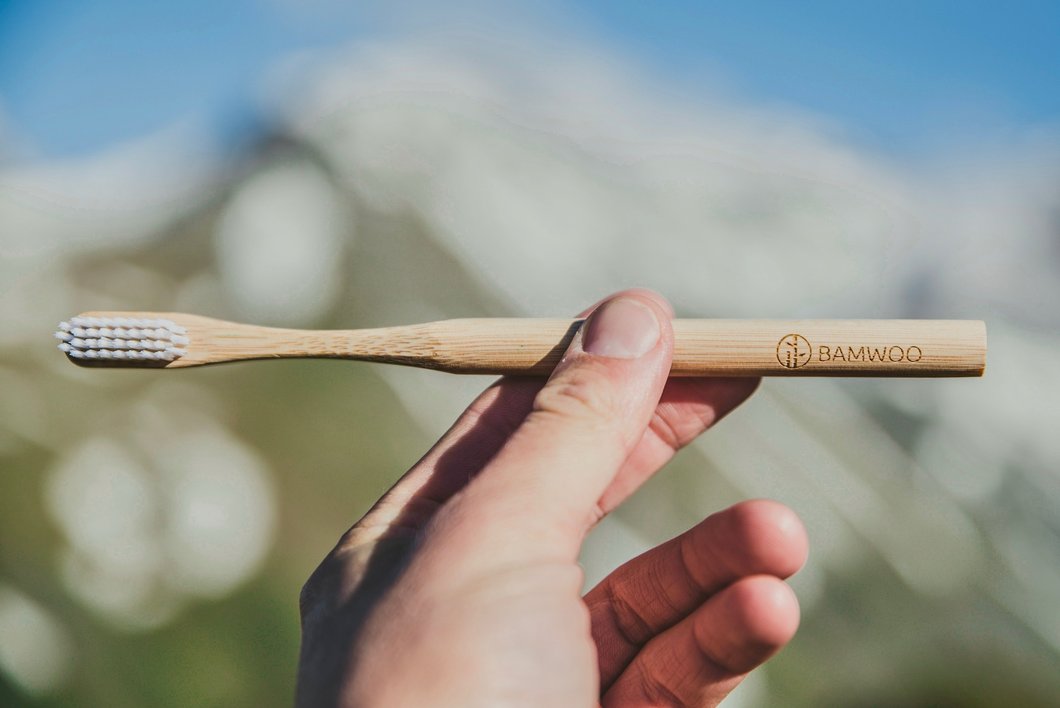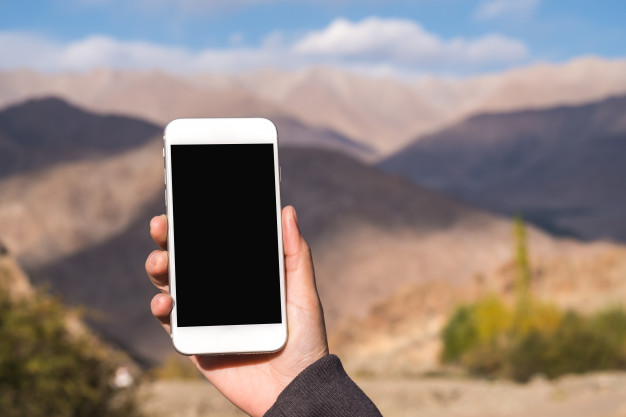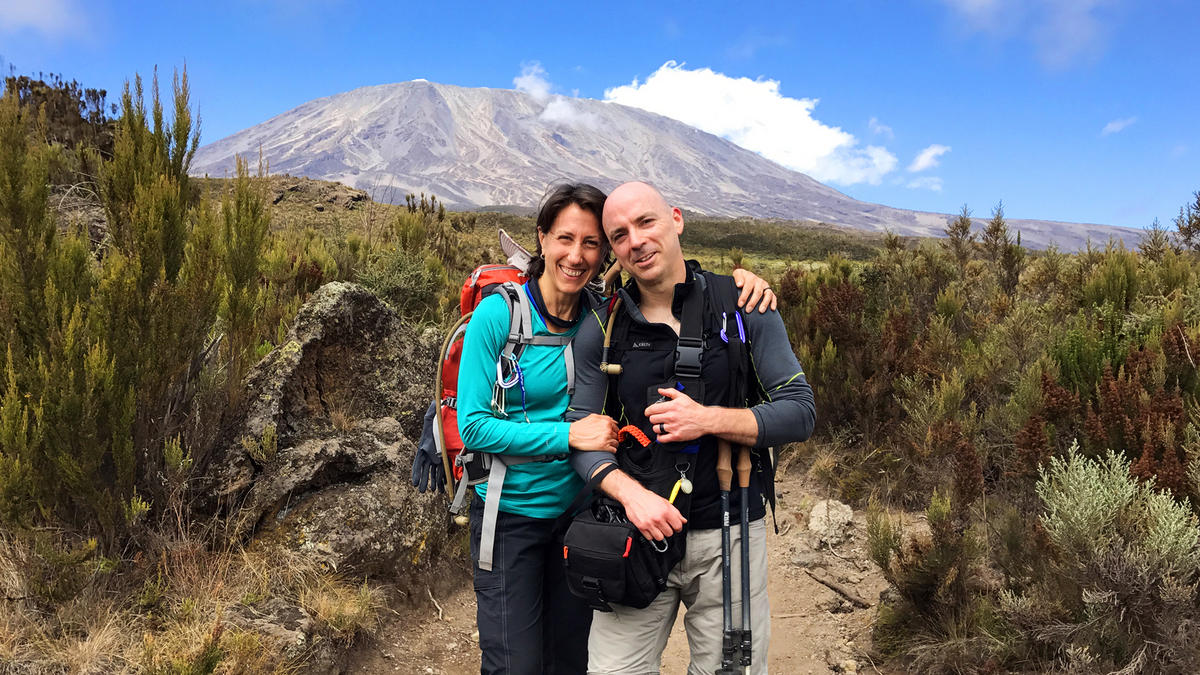
The ultimate Kilimanjaro route between Machame and Lemosho that is best for climbing Mount Kilimanjaro is a debate that has mountaineering experts scratching their heads. Both the Machame and Lemosho routes are great for acclimatization. Over the last few years, Lemosho has grown in popularity among those seeking adventures off the main path. As a result, you can’t go wrong with either option. If you’re looking for a seven-day journey, the Machame route is a good choice. Machame route can be prepared in one of two ways: 1) The Western Breach, which runs past the crater on its way to Uhuru. 2) Barafu to Uhuru via the crater route.
I would recommend the Lemosho route to anyone seeking an eight-day hike. There are two ways to do Lemosho: 1) Western Breach to Uhuru path (past crater) 2) Barafu to Uhuru via the crater route.
On Kilimanjaro, the Lemosho and Machame are the two most popular ascension routes. They’re also quite comparable, so we’ve put this comparison together to help you select between the two options.
Machame & Lemosho routes map difference
Examine the map below, which depicts the Machame and Lemosho trails on Kilimanjaro showing how the two routes take different paths at the beginning before converging at some point midway.
The Lemosho and Machame routes only separate from each other early on from the starting points, as shown in the map above. They meet up on the way to Barranco Camp and then continue on the same path for the duration of the ascent and descent. As a result, the majority of the differences between the two routes occur during the first few days.
Let’s take a look at the variances, starting with the elevations at the trailhead…
Starting points of Machame and Lemosho
The Lemosho route begins at Lemosho Gate, which is located to the northwest of the top. The Machame, on the other hand, begins its approach from Machame Gate in the southwest. This implies that trekkers on the two routes begin their journeys on different trails, stay in various campgrounds, and see different sights.
Machame Gate is 1,640 meters above sea level. This is an excellent starting altitude because it isn’t too high (you won’t feel icky from being at a high altitude). Lemosho Gate is 2,100 meters above sea level. Even though the Lemosho starts a little higher, 2,100 m isn’t a difficult starting elevation. As a result, we don’t believe the beginning altitudes of the two trails should have a significant impact on your route selection.
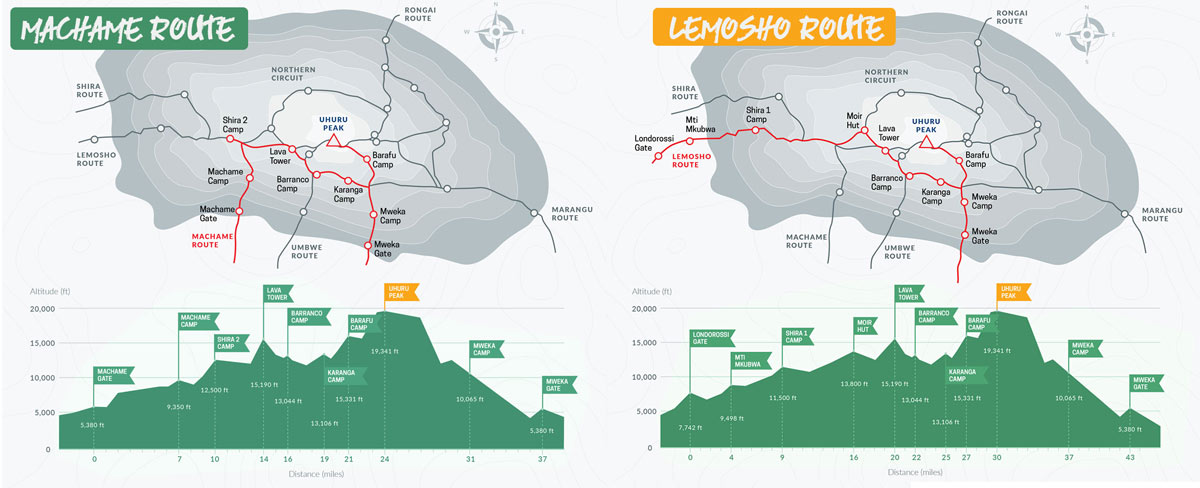
Where the paths cross
At Lava Tower, a popular lunch break, the Lemosho and Machame routes converge. After there, the two paths are identical. Barranco Camp is the first campground shared by trekkers on both routes.
Trekkers on the Lemosho and Machame, starting at Barranco Camp, stay at the same campsites and follow the same path up the mountain. (The sole exception is that those following the Machame route for six days do not stop in Karanga Camp.) But I’ll get to that in a minute.)
Both the Machame and the Lemosho recommend hiking the Mweka descend path after summiting. This trail descends the mountain’s south face to Mweka Gate.
Which one is longer, Machame or Lemosho?
The Machame path has a total distance of 62 kilometers (including your descent via the Mweka route) (39 miles). The Lemosho route is slightly longer (70 km) than the Mweka route (which includes your descent via the Mweka path) (43 miles). Again, the difference in overall distance is insignificant enough that we don’t believe it influences route selection.
Which one is steeper, Machame or Lemosho?
As you may know, the Machame and Lemosho routes differ solely at the beginning. Both paths take you up through the jungle and into the more open moorland vegetation area. On both courses, you should expect some severe hills. The Lemosho, on the other hand, is a little steeper in general. However, this difference isn’t particularly significant, and we wouldn’t recommend taking it into account while planning your itinerary.
Which one is busier, Machame or Lemosho?
The Machame and Lemosho are two of the most popular routes on the mountain, and as such are the busiest. The Machame has a slightly higher volume of traffic than the Lemosho.
For a long time, the Lemosho, the newest climb path, was actually a calmer option. However, word of its incredibleness has spread!
As a result, neither the Machame nor the Lemosho are good candidates for a calm climb. The considerably quieter Northern Circuit route is recommended for individuals who want to avoid the throng as much as possible. The Northern Circuit features the best scenery of all the routes, as well as the highest summit success rate!
Some people, on the other hand, don’t mind if a path is busy, and some enjoy a bustling route with lively campsites. The busier the route, the more people you’ll encounter from all around the world! When choosing the best routes, consider the crowds and the timing.
In terms of scenery which route is more beautiful between Lemosho and Machame?
Even though Lemosho is more scenic, both the Machame and the Lemosho have genuinely magnificent and world-class landscapes to offer. They are, without a doubt, among the most beautiful roads. The scenery is, of course, the same after Lava Tower. It’s only the first few days that provide a change of scenery.
The Lemosho is widely regarded as the most scenic of all the routes. The scenery of the Lemosho is unquestionably superior to that of the Machame, according to Mount Kilimanjaro Routes. The Machame, on the other hand, has spectacular scenery, so you can expect a lovely ascent on anyway.
You trek up through the pristine rainforest on both routes before entering the enchanting and otherworldly moorland zone. From here, the panoramic and breathtaking views of the huge plains begin. The two routes, which both include time in the rainforest and climb the mountain’s western slope, aren’t drastically different in terms of landscape and vegetation.
Summit Success Rates
The Lemosho and the Machame, both seven-day treks, have high summit success rates. As a result, both routes are viable possibilities for ensuring that you reach Uhuru Peak (5,895 m) on summit day. Of course, the longer trek route itineraries have a better success percentage than the shorter trek route itineraries.
This is due to the fact that longer routes allow for better acclimatization. Inadequate acclimatization is by far the most significant contributor to failed summit attempts. If you can’t decide between a longer or shorter itinerary for either route, we recommend taking the longer one.
The longer you spend on the ascent, the more likely you are to reach the summit.
The only people who should choose the shorter route are those who are used to doing high-altitude climbs and know that the thin air isn’t a problem for them. Keep in mind that altitude sickness occurs at any time, regardless of age, health, or fitness. Most of us don’t climb to such high altitudes on a regular basis, therefore it’s best to choose a longer trek route to be safe.
Which Route has the highest summit success rate, Machame or Lemosho?
The Lemosho route has a slightly higher summit success rate than the Machame Route. The Northern Circuit (also known as the Grand Traverse) is a nine-day route with a higher success rate than the Machame and Lemosho. The Machame or Lemosho are fantastic options if nine days is too much for your schedule or too pricey (each day on the mountain increases the price).
Similarities between Lemosho and Machame Routes
The Barranco Wall
The Barranco Wall is required for both the Machame and Lemosho climbs. This is the steepest stretch, requiring you to navigate the small path with your hands and even knees at times. That being said, it’s entirely possible. And it’s a unique experience, because the wall creates a bottleneck and the companionship provides a lasting impression.
The Barranco Wall, on both the Lemosho and Machame climbs, is the steepest portion.
While most people find the Barranco Wall to be quite manageable, if you’re really afraid of heights, we recommend the Northern Circuit. This route skirts the north side of the mountain, avoiding Barranco Wall and other similarly steep features.
Both routes provide two itinerary variations
Both the Lemosho and the Machame provide two different itineraries.
The Lemosho can be accomplished in seven or eight days (including the descent). The discrepancy begins early on, with the seven-day route requiring three days to reach Barranco Camp (3,976 m), whilst the eight-day route requires four days.
The Machame can be accomplished in six or seven days (including the descent). Near the summit, the shorter itinerary bypasses a night in Karanga Camp in favor of a longer trek (3,995 m). As a result, the six-day plan requires you to ascend from Barranco Camp (3,976 m) to Barafu Camp (4,673 m), whereas the seven-day itinerary allows you to cover the same distance in two days.
Accommodation is in tents (campsites)
The early-day campsites are maybe one of the most significant variations in terms of landscape and experience between the two routes. The Lemosho and Machame trekkers rest in different campsites before arriving at Barranco Camp. In addition, trekkers on the seven- and eight-day Lemosho treks stay in separate campsites at one point.
On the Machame route, however, the two itineraries differ solely after Barranco Camp, as the six-day itinerary skips Karanga Camp on its way to Barafu Camp, whilst the seven-day plan has a stopover there. The locations of the camps in question can be seen on the seven-day Machame route map below.
On their journey to Barranco Camp, climbers on the Machame route stay at Machame Camp and Shira Cave Camp. Climbers that use the Lemosho route over seven days stay at Mti Mkubwa Camp and Shira 2 Camp before arriving at Barranco Camp. Climbers staying at Mti Mkubwa Camp, Shira 1 Camp, and Moir Hut during the eight-day Lemosho climb stay at Mti Mkubwa Camp, Shira 1 Camp, and Moir Hut. For your convenience, we’ve included the Lemosho map below.
Sunsets and sunrises are spectacular.
Shira 2 Camp, one of the Machame and Lemosho trekkers’ favorite campsites, is recognized for its excellent location, which frequently allows trekkers to witness spectacular sunsets.
On the seven-day Lemosho trek, you’ll stay at Shira 2 Camp, which is known for its spectacular sunsets.
Furthermore, Karanga Camp, located high on the mountain, is famed for its spectacular sunsets and sunrises. On the six-day Machame route, you bypass Karanga Camp, but on the seven-day itinerary, you remain there. At Karanga Camp, all Lemosho trekkers stay the night.
If you want to learn more about where to see the best sunrises and sunsets on Kilimanjaro, click to Where to see the Best Sunrises and Sunsets on Kilimanjaro.
Beautiful sunsets and sunrises may be seen from high on the mountain.
Both routes provide great Acclimatization
Both the Lemosho and Machame provide excellent acclimatization, especially if you opt for the longer tour over the shorter one.
Acclimatization is the process by which your body adjusts to the lower oxygen levels that come with being at a higher altitude. Acclimatization (or proper acclimatization) takes time. If you were to jump from sea level to 6,000 meters, your body would suffer from altitude sickness. To avoid altitude sickness, gradually increase your height to give your body time to acclimate.
A 2006 poll conducted by the Kilimanjaro National Park Authorities (KINAPA) revealed that
- The peak success rate for 8-day itineraries is 85%.
- The peak success percentage for 7-day itineraries is 64%.
- The peak success rate for 6-day itineraries is only 44%!
Acclimatization is by far the most important component in the given statistics. So you can see why, if at all feasible, we always recommend taking the longer route over the shorter one.
Read more about the climb high-sleep low acclimatization strategy
The climb-high-sleep-low technique is one efficient way of assisting our bodies in acclimating. This is simply trekking to a new height during the day and then returning to a lower level for the night.
Both the Machame and the Lemosho have one of the best climb-high-sleep-low options on the mountain. When the pathways converge near Lava Tower after three or four days, this occurs. Trekkers descend to Barranco Camp (3,976 m) for the night after a morning ascent to Lava Tower (4,630 m). This large reduction in height during the night is quite beneficial for acclimatization.
Conclusion: Lemosho route is the best & Ultimate Kilimanjaro Route
All the Mount Kilimanjaro Routes crew choose the Lemosho over the Machame as the best, all-round and ultimate Kilimanjaro route. Because of the nicer scenery, we favor the Lemosho. We particularly prefer the eight-day Lemosho’s high summit success rate, because we naturally want all of our guests to climb Uhuru Peak!
Please see Lemosho route if you want to learn more about the Lemosho. Both the seven- and eight-day itineraries have extensive breakdowns here. Please read the Machame route for the Machame as well. Both the six-day and seven-day itineraries are broken down below.
The best Lemosho Route Itinerary – 8 Days
All things considered, therefore, the following would therefore be my recommendation:
Day 1: From Lemosho Start Point (2424m) to Forest Camp (2821m). Distance is 5.4km, over 400m of elevation gain.
Day 2: Trek from Forest Camp to Shira 1 Camp (3508m) on the western edge of the Shira Plateau. The distance to Shira 1 is 7.7km.
Day 3: Trek from Shira 1 Camp (3508m) to Moir Hut (4166m) across the Shira Plateau before rising along the flank of a re-entrant. Height gain 658m. Distance = 9.4km. Sunset acclimatization before dinner to 4305m, to the ridge. The trip distance is 1.9km.
Day 4: Trek from Moir Hut (4166m) via Northern Summit Circuit to Pofu Camp (3998m). Optional acclimatisation excursions into the Lent Group (max 4690m) to exploit the climb high – sleep low opportunity thanks to the topography – at the guide’s discretion. Distance = 10.3km.
Day 5: Continue clockwise trek around the northern flanks of Kilimanjaro from Pofu Camp (3998m) to 3rd Caves Camp (3971m). Distance is 6.7km. In the afternoon you would have the option of taking in an excursion to the Saddle, at the discretion of the guide.
Day 6: Today, after two days of pleasantly climbing Kilimanjaro’s northern slopes, you’d trek upwards from 3rd Caves Camp (3971m) to School Hut (4722m). Shorter mileage than the previous two days, but with a 751m gain in altitude. The distance is 4.9 kilometers. You should try to obtain as much sleep as possible this evening, as your assault will most likely begin around 2300-0000. You won’t have to worry about waking up for meals because your crew will do it for you. Even if you don’t feel like eating, you should try to do so because you’ll need the energy. I would recommend getting all of your summit gear ready before going to bed, as you may become disoriented when awoken for the assault.
However, if you have a really capable guiding team and they believe your pace is appropriate, a day assault is also conceivable (to ensure you have time to descend to Millennium or Mweka Camp after summitting). If you’re doing a day assault (as I did with my kids), you should get up around 0400 and be ready to go around 0500.
Day 7: You ascend from School Hut (4722m) to Uhuru Peak (5708m) via Hans Meyer Cave (5243m) and Gilman’s Point (5708m), avoiding the extremely difficult and energy-depleting loose scree slopes above Kibo Hut (which are largely responsible for the fact that only about 42% of trekkers succeed in summiting Kilimanjaro via the Marangu Route. For the night, descend to Mweka Camp (3090m).
Distances on summit day. School Hut to Summit via Gillman’s Point: 5.4km Summit to Barafu: 4.5km Barafu to Mweka Camp: 6.3km. Total is 16.2km.
Day 8: Descend from Mweka Camp to Mweka Gate (1641m). Distance from Mweka Camp to Mweka Gate is 8.5km.
